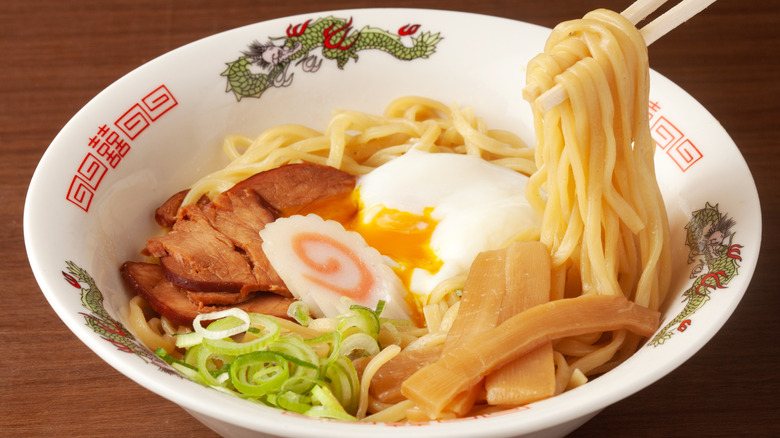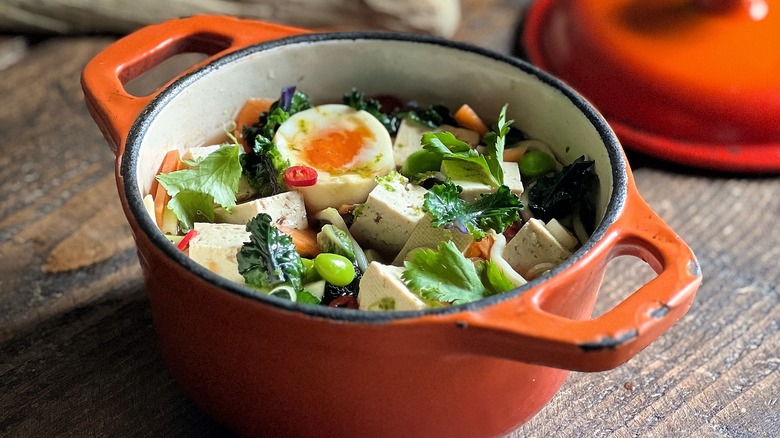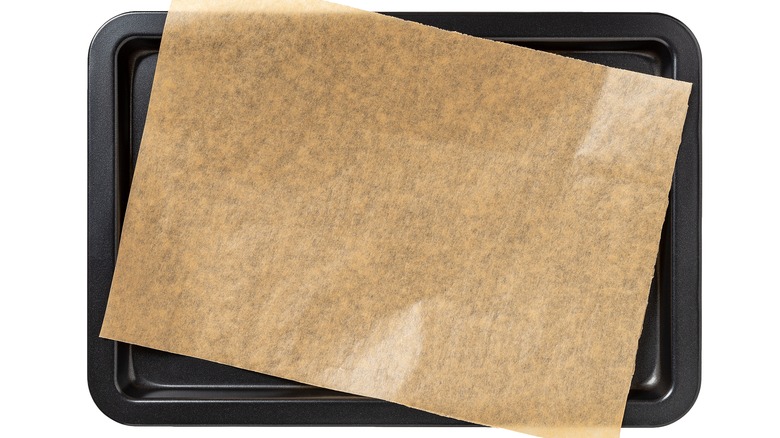For An Easy Dinner, Try Baking Your Ramen
There seems to be no end to the number of simple, creative, and delicious ramen hacks out there for the taking. And it's easy to see why: Packaged ramen is affordable, versatile, and fairly easy to make. And don't leave out the amazing toppings that can make your instant ramen restaurant-worthy. There are literal bowls full of possibilities when it comes to making a great dish at home — and, if you haven't tried baking it yet, grab your oven mitts!
Baking ramen noodles is perfect for those who prefer their noodles a little less soupy as it will provide some lovely texture. There are a few different ways to bake ramen, with some recipes recommending a baking sheet and others suggesting a casserole dish. A casserole-style noodle bake will have a different texture than pan-sheet ramen, so it's worth trying different methods to see which kind you prefer.
As with stovetop or hotpot ramen, you can add a variety of veggies, proteins, and other fun accouterments to suit your taste and elevate the final dish. However you decide to make it, though, baked ramen can be a quick, easy way to use those noodle packages sitting in your pantry.
How to bake ramen noodles in a casserole dish
Whether you're using the casserole or sheet pan baking method, you'll want to soak the noodles in advance. The water doesn't need to be boiling, but warm water will help loosen up the noodles and make them easier to work with. Once pliable, combine the noodles with a sauce of your choice, like teriyaki, and add your favorite protein and veggies for some color and an extra nutritious kick. Chicken and tofu are easy additions that bake well with noodles in the oven and soak up flavor very well. Pressing and marinating your tofu beforehand will also help to lock in all that wonderful flavor.
If you're adding chicken to your noodle bake, you can do so when the poultry is raw before it goes in the oven, but make sure it's cooked to an internal temperature of at least 165 degrees Fahrenheit before serving. Smaller cuts of chicken will help ensure thorough cooking, but either way, it's good to have a meat thermometer on hand to be sure.
Depending on the size of the casserole dish you're using, you can add anywhere from three to four packages of ramen noodles; see what suits your cooking setup best. The great thing about baked ramen is it can be stored in the fridge for up to four days and can be reheated without losing texture and flavor, so it's a great option for meal-prepping and ensuring you have several days of delicious dinners.
Or, bake noodles on a sheet pan for a crispier texture
Baking your ramen noodles on a sheet pan will make for an even crispier, less-liquid-based noodle dinner. As with the casserole method, be sure to soak your noodles for about five minutes beforehand so they can be easily seasoned and spread on the baking sheet. Throw in some fresh or frozen veggies, like broccoli, carrots, and bok choy, plus whatever protein you prefer. Mix in your favorite sauce with the noodles beforehand, or toss it all together on the sheet. Just be sure the noodles are thoroughly coated for an even flavor and sauce ratio. Plan on 25 to 30 minutes in the oven at 450 degrees Fahrenheit for the best results.
Baking instant ramen with additional sauces and seasonings doesn't necessarily require the use of the included flavor packets. When it comes to instant ramen, there are times to use the flavor packets and times to throw them out; this kind of noodle dish can go either way. You can mix one of the packets into your preferred sauce for an extra kick, but you can also save those unused packets for later recipes. There really is no wrong way to bake your ramen. Once cooked, topping it with cheese, soft-boiled eggs, and furikake for some extra zing.



